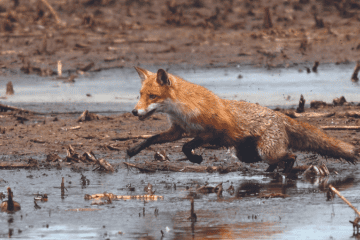
Invasive species inquiry in NSW welcomed
The Invasive Species Council has welcomed a review announced today by the NSW Government into invasive species management and biosecurity.

The Invasive Species Council has welcomed a review announced today by the NSW Government into invasive species management and biosecurity.
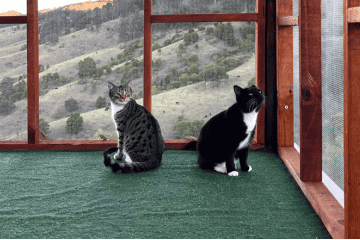
The Invasive Species Council and Nature Conservation Council have called on the NSW government to introduce clear laws to ensure pet cats are kept safe at home in order to save millions of native animals every year. The call comes in the wake of another 48 species added to the endangered species list.
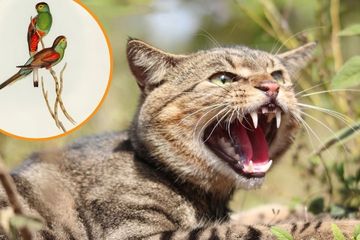
The Invasive Species Council and Biodiversity Council welcomed the federal government draft Threat Abatement Plan for Feral Cats, open for public consultation. Without serious action in Australia, we could lose native wildlife like Bilbies, Numbats, and Night Parrots. Forever.

A landmark global scientific report, released by the United Nations, has found that invasive species cost the global economy over $423 billion every year.
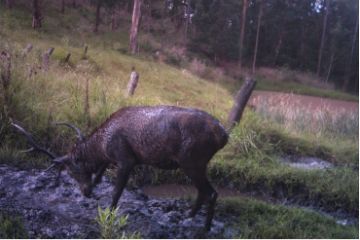
Today’s release of a National Feral Deer Action Plan to tackle the exploding numbers of feral deer has been welcomed by the Invasive Species Council.
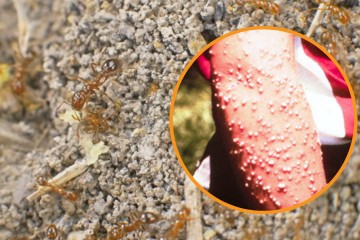
An alliance of environment, agriculture, industry and land management groups are calling for urgent action on Australia’s fire ant outbreak.

The federal budget has taken important steps, but more work is needed to ensure key sectors are paying for the biosecurity risks they create.

The Invasive Species Council welcomes today’s commitment by NSW Labor to fund 100 new National Parks field officers to tackle uncontrolled weeds and pests, maintain fire trails and support firefighting efforts.

Cat-lover or not, none of us can escape the devastating impacts feral and roaming cats are having on Australia’s wildlife.

A visit to New Zealand is to witness a growing movement targeting the killing of pest animals and the excitement in seeing the return of birds and their songs.

In a setback to Australia’s iconic Wet Tropic World Heritage Area, the federal budget has failed to explicitly fund the successful yellow crazy ant control program run by the Wet Tropics Management Authority in Cairns.

A state action plan released last week by the Victorian Government acknowledges the devastating impact feral deer have on the state’s environment. Yet feral deer continue to be protected by law in Victoria as a game species for hunting.
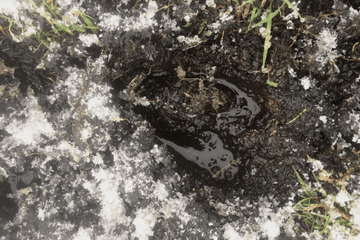
The Tasmanian Government’s Wild Fallow Deer Management Plan, released Sunday, continues the protection of feral deer within hunting zones and designates deer hunting areas within the Tasmanian Wilderness World Heritage Area.

Feral horse story aired on ABC TV’s Four Corners reveals the need for the NSW Government to get on with the task of rapidly removing feral horses from Kosciuszko and show zero tolerance for any attempts to sabotage control efforts.

Territory residents and leading invasive species experts are calling on all federal Australian political parties to commit to funding that will tackle Gamba grass

The Invasive Species Council has welcomed a review announced today by the NSW Government into invasive species management and biosecurity.

The Invasive Species Council and Nature Conservation Council have called on the NSW government to introduce clear laws to ensure pet cats are kept safe at home in order to save millions of native animals every year. The call comes in the wake of another 48 species added to the endangered species list.

The Invasive Species Council and Biodiversity Council welcomed the federal government draft Threat Abatement Plan for Feral Cats, open for public consultation. Without serious action in Australia, we could lose native wildlife like Bilbies, Numbats, and Night Parrots. Forever.

A landmark global scientific report, released by the United Nations, has found that invasive species cost the global economy over $423 billion every year.

Today’s release of a National Feral Deer Action Plan to tackle the exploding numbers of feral deer has been welcomed by the Invasive Species Council.

An alliance of environment, agriculture, industry and land management groups are calling for urgent action on Australia’s fire ant outbreak.

The federal budget has taken important steps, but more work is needed to ensure key sectors are paying for the biosecurity risks they create.

The Invasive Species Council welcomes today’s commitment by NSW Labor to fund 100 new National Parks field officers to tackle uncontrolled weeds and pests, maintain fire trails and support firefighting efforts.

Cat-lover or not, none of us can escape the devastating impacts feral and roaming cats are having on Australia’s wildlife.

A visit to New Zealand is to witness a growing movement targeting the killing of pest animals and the excitement in seeing the return of birds and their songs.

In a setback to Australia’s iconic Wet Tropic World Heritage Area, the federal budget has failed to explicitly fund the successful yellow crazy ant control program run by the Wet Tropics Management Authority in Cairns.

A state action plan released last week by the Victorian Government acknowledges the devastating impact feral deer have on the state’s environment. Yet feral deer continue to be protected by law in Victoria as a game species for hunting.

The Tasmanian Government’s Wild Fallow Deer Management Plan, released Sunday, continues the protection of feral deer within hunting zones and designates deer hunting areas within the Tasmanian Wilderness World Heritage Area.

Feral horse story aired on ABC TV’s Four Corners reveals the need for the NSW Government to get on with the task of rapidly removing feral horses from Kosciuszko and show zero tolerance for any attempts to sabotage control efforts.

Territory residents and leading invasive species experts are calling on all federal Australian political parties to commit to funding that will tackle Gamba grass

The Invasive Species Council has welcomed a review announced today by the NSW Government into invasive species management and biosecurity.

The Invasive Species Council and Nature Conservation Council have called on the NSW government to introduce clear laws to ensure pet cats are kept safe at home in order to save millions of native animals every year. The call comes in the wake of another 48 species added to the endangered species list.

The Invasive Species Council and Biodiversity Council welcomed the federal government draft Threat Abatement Plan for Feral Cats, open for public consultation. Without serious action in Australia, we could lose native wildlife like Bilbies, Numbats, and Night Parrots. Forever.

A landmark global scientific report, released by the United Nations, has found that invasive species cost the global economy over $423 billion every year.

Today’s release of a National Feral Deer Action Plan to tackle the exploding numbers of feral deer has been welcomed by the Invasive Species Council.

An alliance of environment, agriculture, industry and land management groups are calling for urgent action on Australia’s fire ant outbreak.

The federal budget has taken important steps, but more work is needed to ensure key sectors are paying for the biosecurity risks they create.

The Invasive Species Council welcomes today’s commitment by NSW Labor to fund 100 new National Parks field officers to tackle uncontrolled weeds and pests, maintain fire trails and support firefighting efforts.

Cat-lover or not, none of us can escape the devastating impacts feral and roaming cats are having on Australia’s wildlife.

A visit to New Zealand is to witness a growing movement targeting the killing of pest animals and the excitement in seeing the return of birds and their songs.

In a setback to Australia’s iconic Wet Tropic World Heritage Area, the federal budget has failed to explicitly fund the successful yellow crazy ant control program run by the Wet Tropics Management Authority in Cairns.

A state action plan released last week by the Victorian Government acknowledges the devastating impact feral deer have on the state’s environment. Yet feral deer continue to be protected by law in Victoria as a game species for hunting.

The Tasmanian Government’s Wild Fallow Deer Management Plan, released Sunday, continues the protection of feral deer within hunting zones and designates deer hunting areas within the Tasmanian Wilderness World Heritage Area.

Feral horse story aired on ABC TV’s Four Corners reveals the need for the NSW Government to get on with the task of rapidly removing feral horses from Kosciuszko and show zero tolerance for any attempts to sabotage control efforts.

Territory residents and leading invasive species experts are calling on all federal Australian political parties to commit to funding that will tackle Gamba grass
Get our blog the Feral Herald delivered to your inbox.
Our protected areas are being trashed, trampled, choked and polluted by an onslaught of invaders. Invasive species are already the overwhelming driver of our animal extinction rate, and are expected to cause 75 of the next 100 extinctions.
But you can help to turn this around and create a wildlife revival in Australia.
From numbats to night parrots, a tax-deductible donation today can help defend our wildlife against the threat of invasive weeds, predators, and diseases.
As the only national advocacy environment group dedicated to stopping this mega threat, your gift will make a big difference.
A silent crisis is unfolding across Australia. Every year, billions of native animals are hunted and killed by cats and foxes. Fire ants continue to spread and threaten human health. And the deadly strain of bird flu looms on the horizon. Your donation today will be used to put the invasive species threat in the media, make invasive species a government priority, ensure governments take rapid action to protect nature and our remarkable native wildlife from invasives-led extinction, death and destruction.
If you are having trouble submitting a form, please read this guide.
Please fill out the following form and one of our team will be in contact to assist as soon as possible. Please make sure to include any helpful information, such as the device you were using (computer, tablet or mobile phone) and if known, your browser (Mozilla Firefox, Chrome, Safari etc)
"*" indicates required fields
Dear Project Team,
[YOUR PERSONALISED MESSAGE WILL APPEAR HERE.]
I support the amendment to the Kosciuszko National Park Wild Horse Heritage Management Plan to allow our incredible National Parks staff to use aerial shooting as one method to rapidly reduce feral horse numbers. I want to see feral horse numbers urgently reduced in order to save the national park and our native wildlife that live there.
The current approach is not solving the problem. Feral horse numbers have rapidly increased in Kosciuszko National Park to around 18,000, a 30% jump in just the past 2 years. With the population so high, thousands of feral horses need to be removed annually to reduce numbers and stop our National Park becoming a horse paddock. Aerial shooting, undertaken humanely and safely by professionals using standard protocols, is the only way this can happen.
The government’s own management plan for feral horses states that ‘if undertaken in accordance with best practice, aerial shooting can have the lowest negative animal welfare impacts of all lethal control methods’.
This humane and effective practice is already used across Australia to manage hundreds of thousands of feral animals like horses, deer, pigs, and goats.
Trapping and rehoming of feral horses has been used in Kosciuszko National Park for well over a decade but has consistently failed to reduce the population, has delayed meaningful action and is expensive. There are too many feral horses in the Alps and not enough demand for rehoming for it to be relied upon for the reduction of the population.
Fertility control as a management tool is only effective for a small, geographically isolated, and accessible population of feral horses where the management outcome sought is to maintain the population at its current size. It is not a viable option to reduce the large and growing feral horse population in the vast and rugged terrain of Kosciuszko National Park.
Feral horses are trashing and trampling our sensitive alpine ecosystems and streams, causing the decline and extinction of native animals. The federal government’s Threatened Species Scientific Committee has stated that feral horses ‘may be the crucial factor that causes final extinction’ for 12 alpine species.
I recognise the sad reality that urgent and humane measures are necessary to urgently remove the horses or they will destroy the Snowies and the native wildlife that call the mountains home. I support a healthy national park where native species like the Corroboree Frog and Mountain Pygmy Possum can thrive.
Dear Project Team,
[YOUR PERSONALISED MESSAGE WILL APPEAR HERE.]
I support the amendment to the Kosciuszko National Park Wild Horse Heritage Management Plan to allow our incredible National Parks staff to use aerial shooting as one method to rapidly reduce feral horse numbers. I want to see feral horse numbers urgently reduced in order to save the national park and our native wildlife that live there.
The current approach is not solving the problem. Feral horse numbers have rapidly increased in Kosciuszko National Park to around 18,000, a 30% jump in just the past 2 years. With the population so high, thousands of feral horses need to be removed annually to reduce numbers and stop our National Park becoming a horse paddock. Aerial shooting, undertaken humanely and safely by professionals using standard protocols, is the only way this can happen.
The government’s own management plan for feral horses states that ‘if undertaken in accordance with best practice, aerial shooting can have the lowest negative animal welfare impacts of all lethal control methods’.
This humane and effective practice is already used across Australia to manage hundreds of thousands of feral animals like horses, deer, pigs, and goats.
Trapping and rehoming of feral horses has been used in Kosciuszko National Park for well over a decade but has consistently failed to reduce the population, has delayed meaningful action and is expensive. There are too many feral horses in the Alps and not enough demand for rehoming for it to be relied upon for the reduction of the population.
Fertility control as a management tool is only effective for a small, geographically isolated, and accessible population of feral horses where the management outcome sought is to maintain the population at its current size. It is not a viable option to reduce the large and growing feral horse population in the vast and rugged terrain of Kosciuszko National Park.
Feral horses are trashing and trampling our sensitive alpine ecosystems and streams, causing the decline and extinction of native animals. The federal government’s Threatened Species Scientific Committee has stated that feral horses ‘may be the crucial factor that causes final extinction’ for 12 alpine species.
I recognise the sad reality that urgent and humane measures are necessary to urgently remove the horses or they will destroy the Snowies and the native wildlife that call the mountains home. I support a healthy national park where native species like the Corroboree Frog and Mountain Pygmy Possum can thrive.